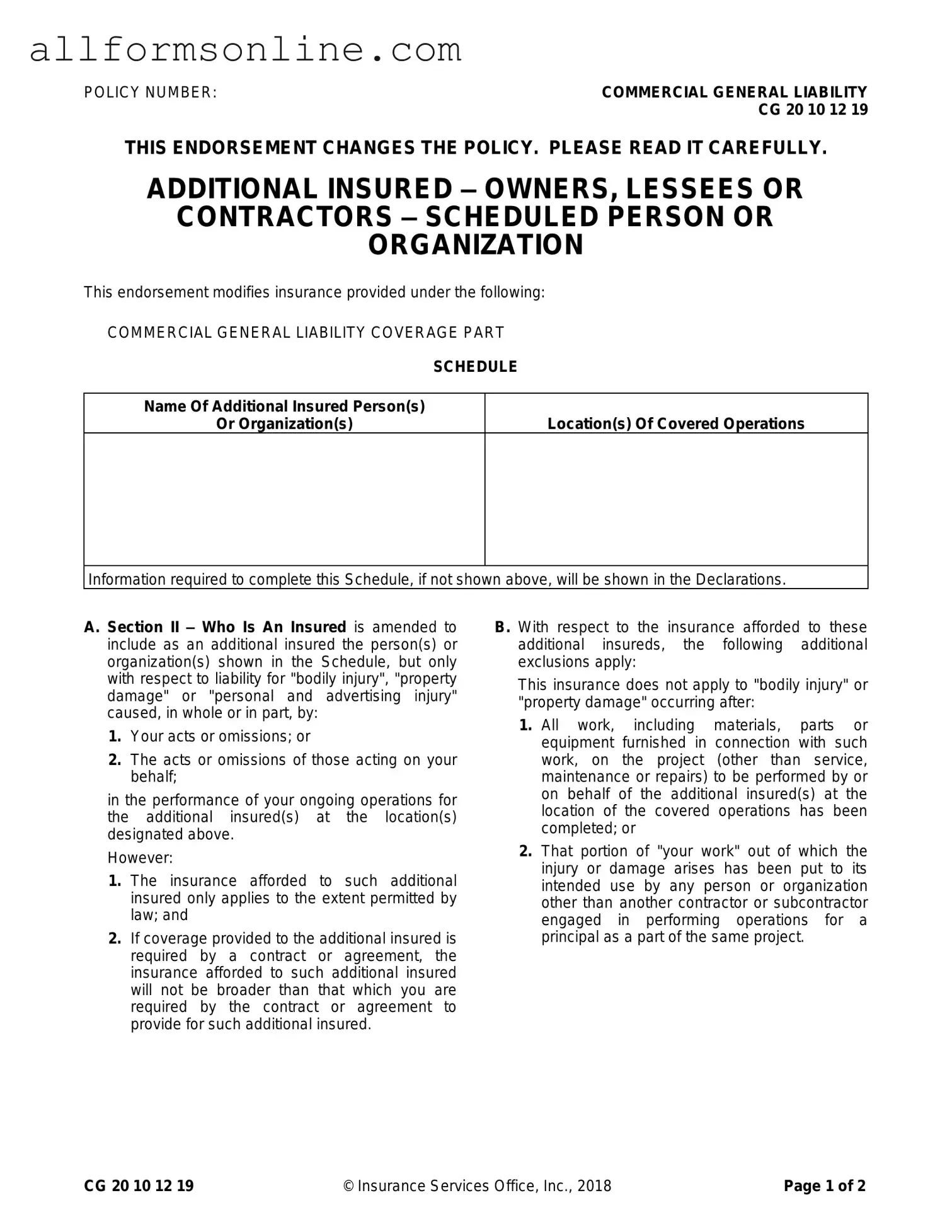What is the purpose of the CG 20 10 07 04 Liability Endorsement form?
The CG 20 10 07 04 Liability Endorsement form is designed to add specific individuals or organizations as additional insureds under a commercial general liability policy. This means that these additional insured parties are protected against certain liabilities that may arise from the actions or omissions of the primary insured party while performing work on their behalf. It’s particularly useful in construction and service contracts, where multiple parties may be involved.
Who qualifies as an additional insured under this endorsement?
The endorsement allows for the inclusion of any person or organization listed in the schedule section of the form. They are considered additional insureds only with respect to liability for bodily injury, property damage, or personal and advertising injury that results from the acts or omissions of the primary insured or their representatives during ongoing operations at designated locations. It’s important to note that this coverage is limited to the scope specified in the contract or agreement.
What limitations are placed on the coverage for additional insureds?
While the endorsement offers valuable protection, it comes with specific limitations. Coverage for additional insureds only applies if the liability arises during ongoing operations and does not extend to situations where the work has been completed. Moreover, if the additional insured’s coverage is stipulated by a contract, the insurance provided cannot exceed what is required by that contract. This ensures that the coverage remains aligned with the contractual obligations of the primary insured.
What happens if the work has been completed?
If the work related to the project is completed, the coverage for additional insureds will no longer apply to any bodily injury or property damage that occurs after that completion. This includes all materials, parts, or equipment associated with the work. Essentially, once the project is finished and the work is put to its intended use, the additional insureds are not covered for any resulting claims.
How does the endorsement affect the limits of insurance?
The endorsement does not increase the overall limits of insurance provided by the policy. Instead, if coverage for the additional insured is required by a contract, the maximum amount payable will be the lesser of what is stipulated in the contract or the limits available under the primary insured’s policy. This ensures that the insurer's exposure remains consistent and manageable.
Is it necessary to include specific locations or operations for the additional insureds?
Yes, it is crucial to specify the locations and operations in the endorsement. This ensures clarity regarding where the coverage applies and what activities are included. Without this information, the endorsement may not provide the intended protection, potentially leaving the additional insureds vulnerable in situations where coverage is needed. Always ensure that this information is accurately reflected in the schedule section of the endorsement.
